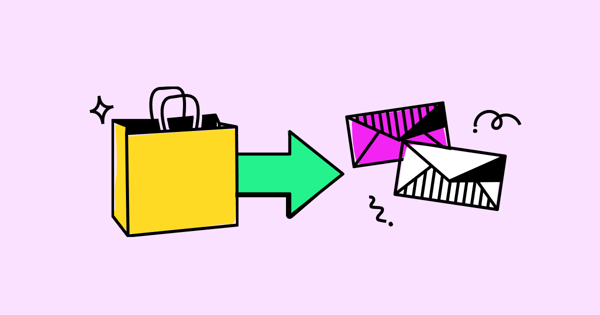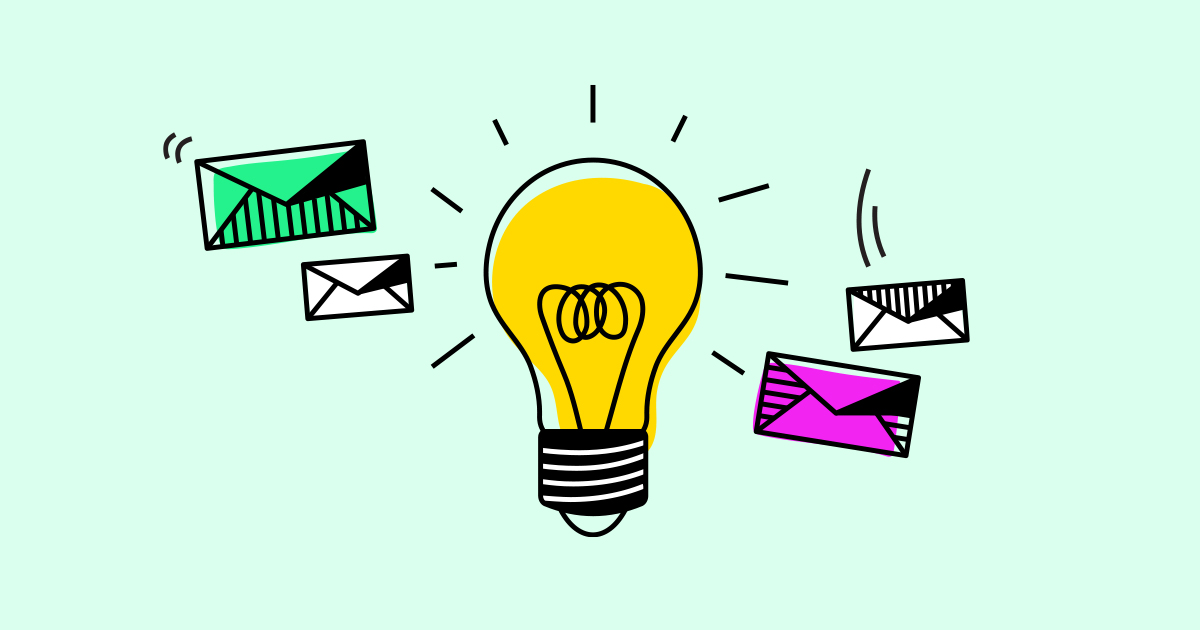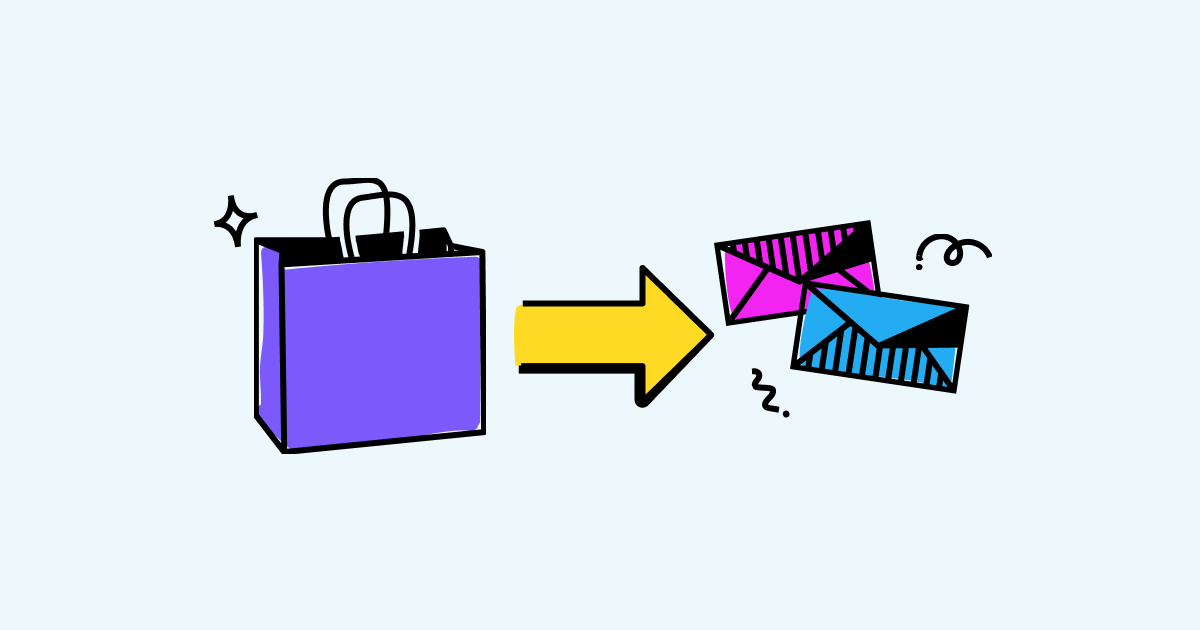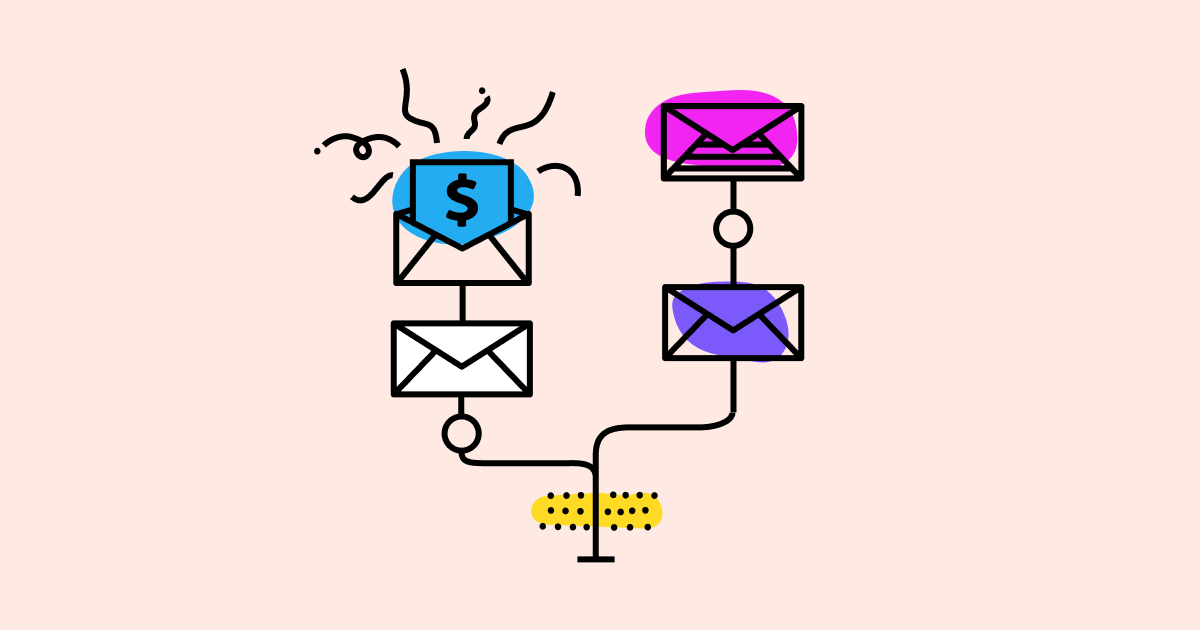To run a successful ecommerce business you must build long-term relationships with customers.
When you increase customer loyalty by just 7 percent, you increase customer lifetime value by more than 85 percent.
Post-purchase emails make a huge difference in whether a customer will just be a one-timer or they’ll keep coming back to your store for more. As long as you use them strategically, that is.
So, in this post, you’ll see some stellar post-purchase email examples that also employ effective marketing and sales tactics.
7 Best Post-Purchase Email Examples We’ve Seen
- 1. Show Off Your Unique Personality (Allbirds)
- 2. Encourage Customer Retention (Athletic Greens)
- 3. Incentivize Your Upsell (KiwiCo)
- 4. Recommend What Customers Should Buy Next (Ten Thousand)
- 5. Send Out a Timely Reminder for a Refill (Fullscript)
- 6. Share Useful Information (Rooted)
- 7. Check in with Your Customers (Ring)
What Are Post-Purchase Emails?
Post-purchase emails are those you send to a customer after they buy something from your online store. They tend to be part of an automated email sequence and might contain updates or important information about the customer’s order.
But you can use them for much more than simply sharing information. For example, you may use a post-purchase email to upsell a customer or increase customer loyalty.
It’s important you make use of post-purchase emails in this way, as they have some of the best open rates and click-through rates compared to other types of email.
So let’s take a look at how you can take advantage of those sweet metrics.
1. Show Off Your Unique Personality (Allbirds)
The order confirmation email is a staple. It’s like putting guac on your burrito—it needs to happen.
The reason is that customers need assurance after they part with their money. They want confirmation that it hasn’t just disappeared into the ether, but rather a legit company is getting their order ready.
You need to include the basics in an order confirmation email, i.e. the item(s), cost, shipping address, a tracking link, order number, and so on. But the email doesn’t need to be as dry as a handful of crackers.
You can do more with it, as Allbirds does in this example:
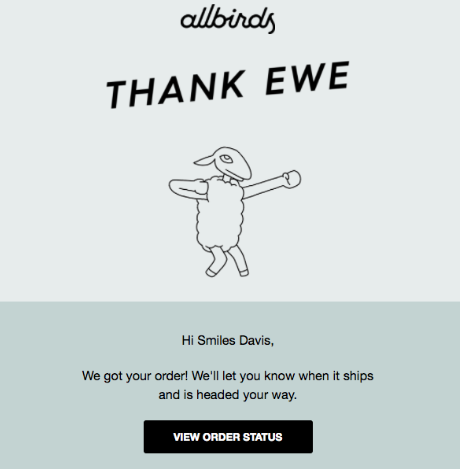
It’s a lot of fun. And because of this, the email is memorable.
Like Allbirds, make sure post-purchase emails align with your brand’s unique style. Make the email stand out and your brand will remain at the forefront of the customer’s mind.
In the same email, Allbirds also mentions the company’s principles:
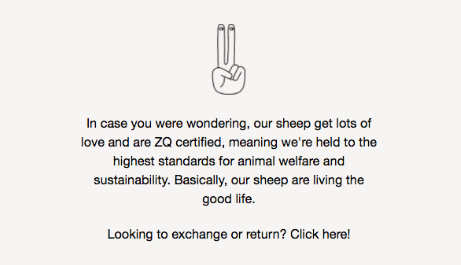
Again, it emphasizes what makes the brand unique. But it also makes the customer even more delighted with their purchase.
As the brand cares about animal welfare and sustainability, it makes the customer feel good about themselves for purchasing from this particular brand over another.
A post-purchase email is a perfect place to reinforce the brand’s values. There’s no chance buyer’s remorse will creep in here. You can do something similar to ensure a positive lasting impression of your brand.
2. Encourage Customer Retention (Athletic Greens)
As you saw above, a lot of customers open order confirmation emails. The same goes for shipping confirmation emails and similar notifications.
Remember you have to make full use of having the customer’s attention while you have it. You may not get another opportunity after the post-purchase sequence.
In this example, Athletic Greens seizes the chance to encourage customer retention:
 First, they encourage customers to use their products regularly as part of their “new healthy habit”. They want the consumer to use the product habitually so that they don’t switch to another brand.
First, they encourage customers to use their products regularly as part of their “new healthy habit”. They want the consumer to use the product habitually so that they don’t switch to another brand.
There’s also mention of the Athletic Greens “community” and “family”. The feeling of community further encourages customers to stick with a brand. They feel more connected to it or even part of an exclusive group.
This extends to asking customers to sign up for the Facebook group. When customers do this, they literally become part of a community.
Plus, it keeps the customer involved with the brand. On the Facebook group, they’ll see useful content, company updates, notifications for sales, and so on and so forth.
You should do something similar in your post-purchase emails. You may not necessarily guide customers to a Facebook group. Perhaps, you ask users to join you on Pinterest, for example. It’s all about what makes the most sense for your audience in particular.
Or you could even ask them to sign up for SMS updates so you have another way to stay in contact with the customer. Choose whichever channel you find best for communicating with customers.
3. Incentivize Your Upsell (KiwiCo)
The purpose of an upsell is to get customers to purchase an upgraded, more expensive item or an add-on that makes their overall purchase larger. For instance, getting customers to opt for a multipack rather than a single item.
Naturally, upselling is an effective means of increasing the average order value. It’s also easier to sell something to an existing customer than to acquire a new one.
To cut a long story short, you should be upselling your customers. And a post-purchase email is a good place to do that as these customers have recently shown great purchase intent by making a purchase from you.
KiwiCo cleverly uses an incentive as part of its upsell in this example:
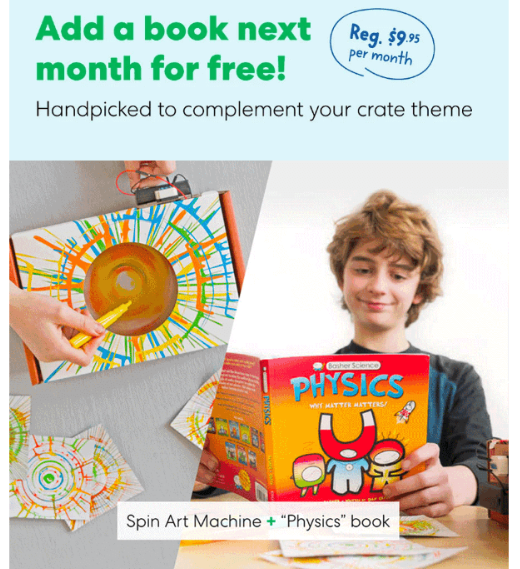
The upsell adds an extra item to a subscription box thus raising its price going forward. But the incentive means customers get the first upgrade as a freebie.
To successfully upsell an item customers must feel like they’re getting a good deal. So offering a freebie, free trial, or similar incentive as part of your upsell is a good idea.
Another way to encourage customers to go for your upsell is to make sure it's super relevant and personalized based on their purchase and/or browse history. In the above example, the company explicitly says the add-on will complement the rest of the items in the subscription box, for instance.
Your brand might personalize in a different way, though. Perhaps you add the option to customize an item with the customer’s design, etc. As always, you have to do what makes the most sense for your customers.
4. Recommend What Customers Should Buy Next (Ten Thousand)
Include product recommendations in your post-purchase emails. As long as you approach it in the right way, i.e. the recommendations are relevant, this benefits the customer as well as your business.
When you cross-sell items that meet the customer’s needs it helps to foster customer satisfaction and long-term relationships. Plus, cross-selling can increase sales by 20 percent and profits by 30 percent.
A shipping confirmation email is a great place to add a cross-sell. The order is done and now you want to encourage another purchase. And that’s more likely to happen if the product is closely related to what the customer just bought.
In this example, Ten Thousand invites the customer to complete their kit:
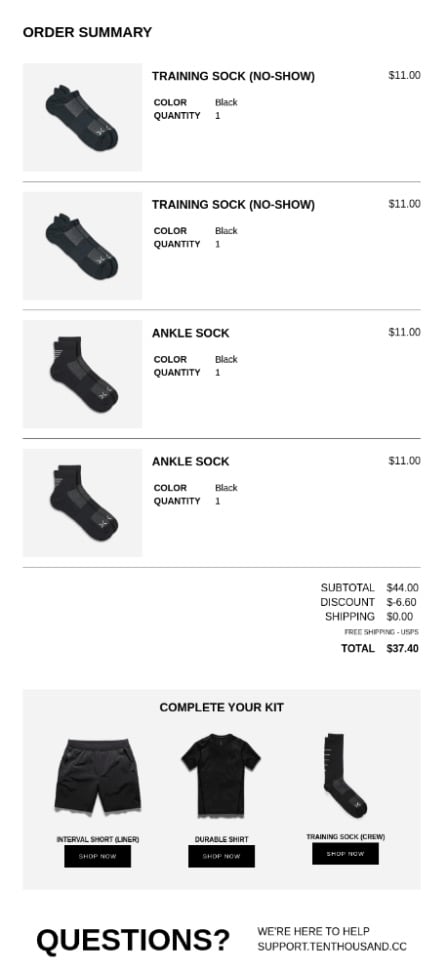
This is a common approach for apparel companies. They recommend complementary items of clothing and accessories that match the previous purchase. You may have seen similar “Complete the outfit” cross-sells.
But, naturally, you can recommend related products in all manner of categories. Let’s say you sold a camera. You might recommend a ring light to go with it, for instance.
Another option is to recommend products that other “customers also bought”. This works because of social proof. Customers believe if others have bought these items then it’s probably a good idea.
You may even wish to incentivize a cross-sell. For instance, you could give the customer a discount or free shipping if they come back to your store and purchase the complementary item.
5. Send Out a Timely Reminder for a Refill (Fullscript)
If you sell products that customers need to replenish often, it’s a good idea to send out an email when it’s time for them to re-stock. It’s a reminder that you can easily automate to boost sales.
Here we have an example from a supplements company reminding the customer that they’re about to run out of their Omega 3:
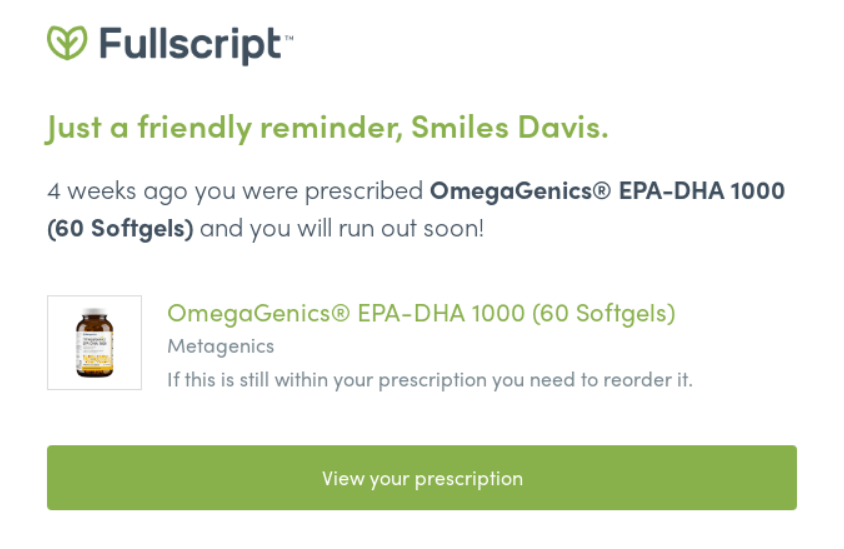 For a product like this, it’s quite easy to set reminder emails on autopilot. The reason is it’s clear how many pills are in a bottle and how often the customer takes them.
For a product like this, it’s quite easy to set reminder emails on autopilot. The reason is it’s clear how many pills are in a bottle and how often the customer takes them.
For your company, you might need to do things a little differently. Let’s say you sell razors for instance. You might have one subset of customers that shave their legs daily and another that shaves just now and again.
In this case, you’d have to segment customers to send out reminders to the right groups at the right time, e.g. every three weeks compared to every three months.
Either way, make sure the email is sent before the customer runs out of the product. You don’t want them having to head to a physical store last minute as they didn’t realize they’d run out (instead of buying from your online store).
6. Share Useful Information (Rooted)
Send out informative emails after a customer purchase to enhance the customer experience. There may be certain things customers need to know so that they don’t run into any issues with your product.
HereRooted uses a tutorial in a post-purchase email to make sure customers unbox their plants properly:
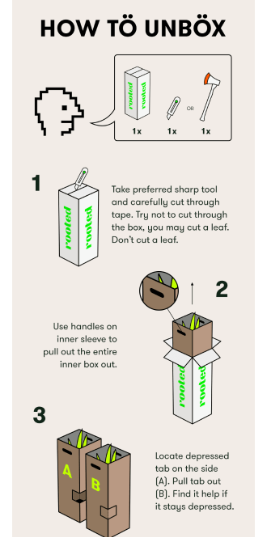
This offers a lot of value to the customer and creates a positive impression of the brand. Rooted anticipated the needs of the customer before they even knew they needed help. That is how you use email content to create a superior experience for customers.
In order to do something similar, you’ll need to have a deep understanding of your products and customers. This kind of thing is achieved through research and testing. When you know what potential roadblocks a customer might run into, you can prevent such from happening.
It’s also a good idea to send out emails that help users get the most from your products. For instance, further tips and guides that relate to the product specifically.
You don’t want your product just sitting in a drawer somewhere. When customers are able to get the most out of a product, they’ll keep using it, buy more, recommend it to their friends, and so on.
7. Check in with Your Customers (Ring)
Another pillar of the post-purchase sequence is, of course, the feedback request. You can gain so much from one little email.
Feedback helps you improve your products and service. This benefits the customer and your business. A better product/service helps you retain and acquire more customers at the end of the day.
What’s more, you can gather this feedback and use it in strategic locations to encourage sales. For example, you might say “X customers loved this product” on a landing page or product page.
This is a nice example of a feedback request from Ring as it touches on the values of the brand and the deeper purpose of the product:
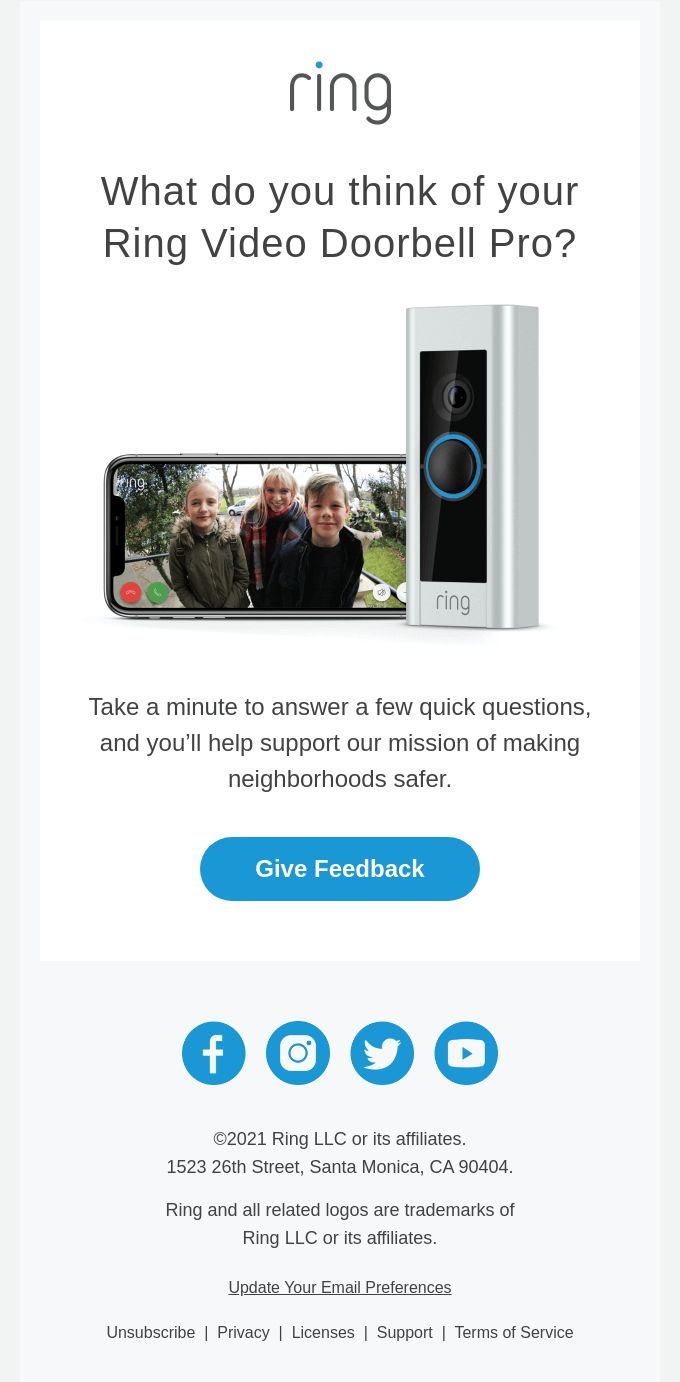
They draw on customer emotions when they say “Take a minute to answer a few quick questions and you’ll help support our mission of making neighborhoods safer.” It’s a highly convincing way to get people to take part.
Like Ring, you should emphasize how customer feedback helps improve the product as well as the greater impact it’ll have in the big scheme of things.
Another way of ensuring customers share their feedback is to make the process as simple and quick as possible. Customers don’t want to spend too much time on this kind of thing. So you could use a one-question survey or a Net Promoter Score survey in which customers give their rating out of ten for example.
Final Word
As you’ve seen, a post-purchase email is much more than a simple notification that an item has been ordered or it’s on its way. It’s an opportunity to make further sales and build a long-term relationship with the customer.
So consider what you want to include in your post-purchase emails carefully. Get the timing right, share relevant info and recommendations, and delight customers with your follow-up messages.
What’s next? If you haven’t already, you may wish to build an automated post-purchase sequence based on your customers’ habits. Then you’ll be able to incorporate the effective tactics you saw here to make the most of your post-purchase emails.

